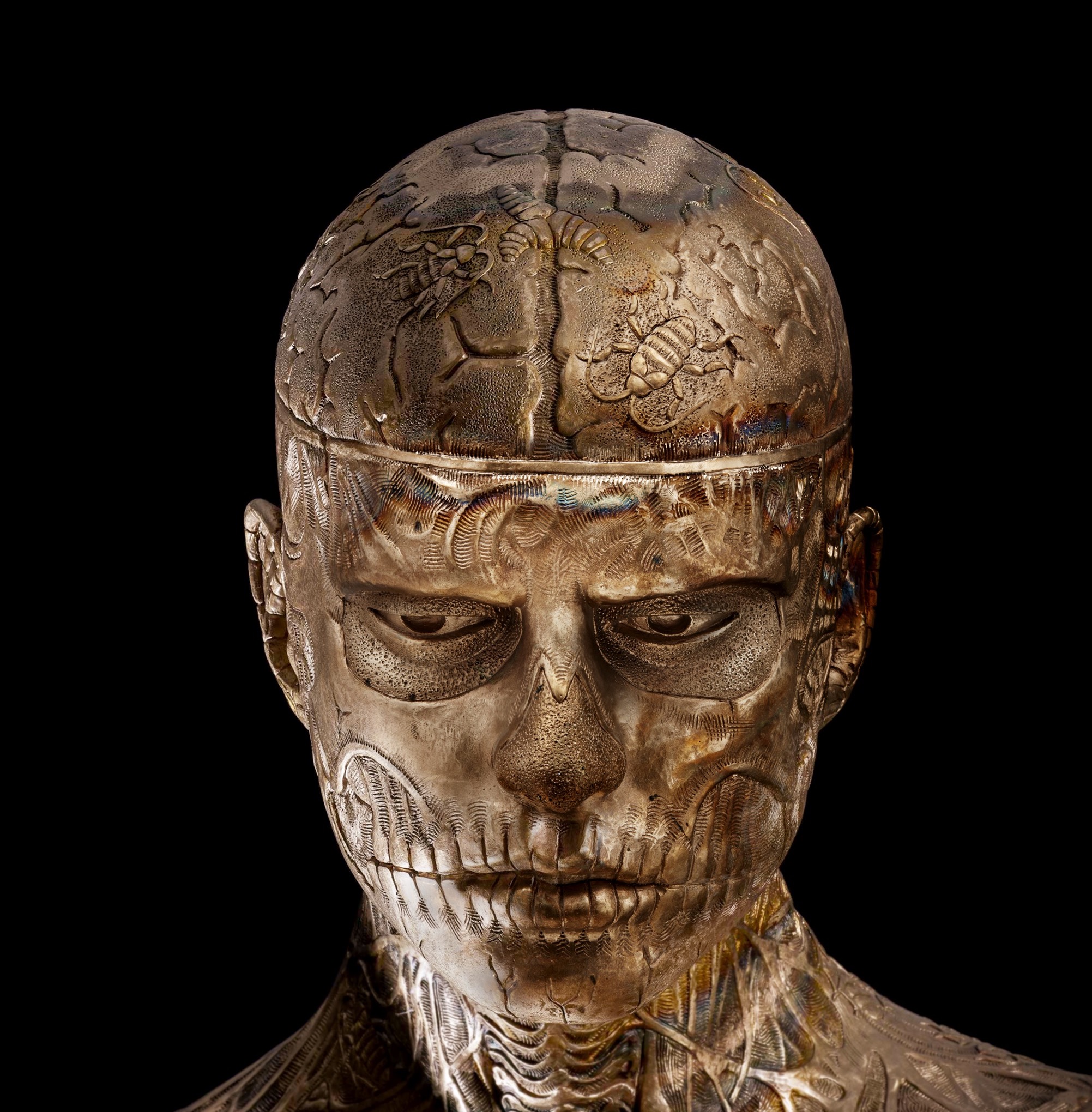
Overview:
Marc Quinn’s monumental sculpture titled Self-conscious Gene has been unveiled at the Science Museum in London, after almost a year in creation.
Self-conscious Gene is a monumental bronze sculpture commissioned by the Science Museum in London, which holds a world-class public collection of scientific, technological and medical advancement from across the globe. Self-conscious Gene depicts Rick Genest, popularly known as ‘Zombie Boy’, who began covering his body with tattoos of the inside of this body following a period of illness. At 3.5m (11’6”) tall, the sculpture towers over the audiences it welcomes to the museum’s Medicine Galleries. In this context Rick becomes a ‘ready-made’ version of an anatomical model, a link between the vision of our contemporary culture and the scientific art of the past, and the centuries-old human fascination with our bodies. The sculpture evolved from Quinn’s Body Alteration series, which explores how, using modern medicine and technology, people have modified their outer bodies to reflect the identity they wish to project—bringing the inside out.
“After a period of illness Rick Genest began to have the inside of his body drawn onto his skin by a tattoo artist. Literalising a quest to understand his own body, his tattoos are a kind of poetry. His ritual mirrors our quest through medicine to understand and fix ourselves. It seemed to me that this was exactly what was needed in the Science Museum, one of my favourite museums in London, and one which I’ve been visiting since I was a child. The Museum is a mixture of knowledge, art and wonder. I hope that this sculpture will add to all three of these elements.”- Marc Quinn
In Self-conscious Gene, Rick holds an encyclopaedia of anatomy and the tension between the book and figure creates a meditative atmosphere. Having first sat for Quinn in 2010, Genest sadly passed away in 2018, the year that Self-conscious Gene was created. The sculpture now has a dual purpose, serving as a monument to a unique individual who inspired a generation.
“Artists and scientists have helped shape our sense of the body and health, and placed medicine as central to our culture. That is why we wanted to position new art commissions alongside the richly visual medical artefacts in our existing collection, to help visitors consider anew their relationship with medicine. It has been a personal ambition of mine to work with Marc Quinn for more than two decades, and I am sure our millions of visitors will be both fascinated and challenged by this remarkable sculpture for many years to come.” - Ian Blatchford, Director of the Science Museum

